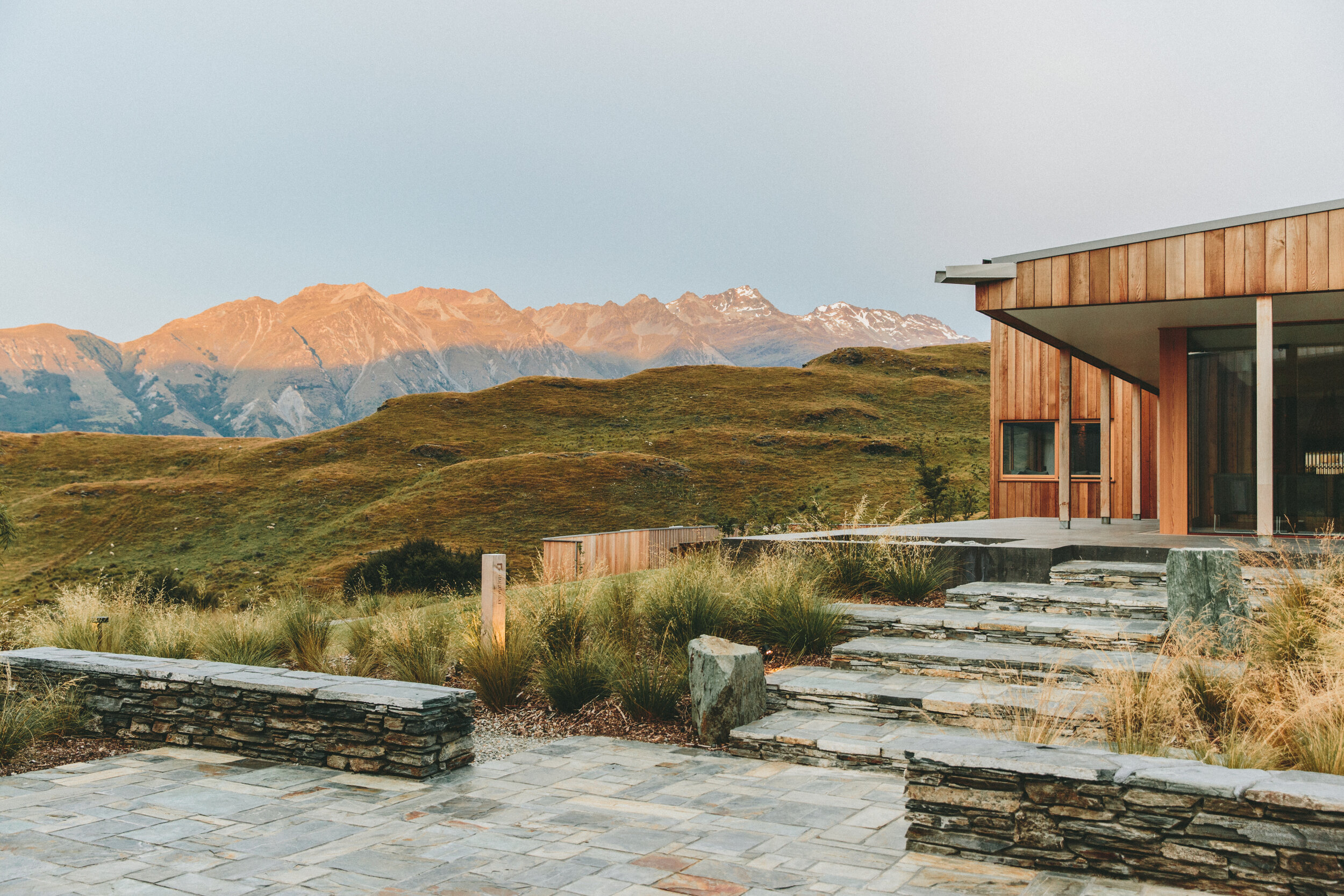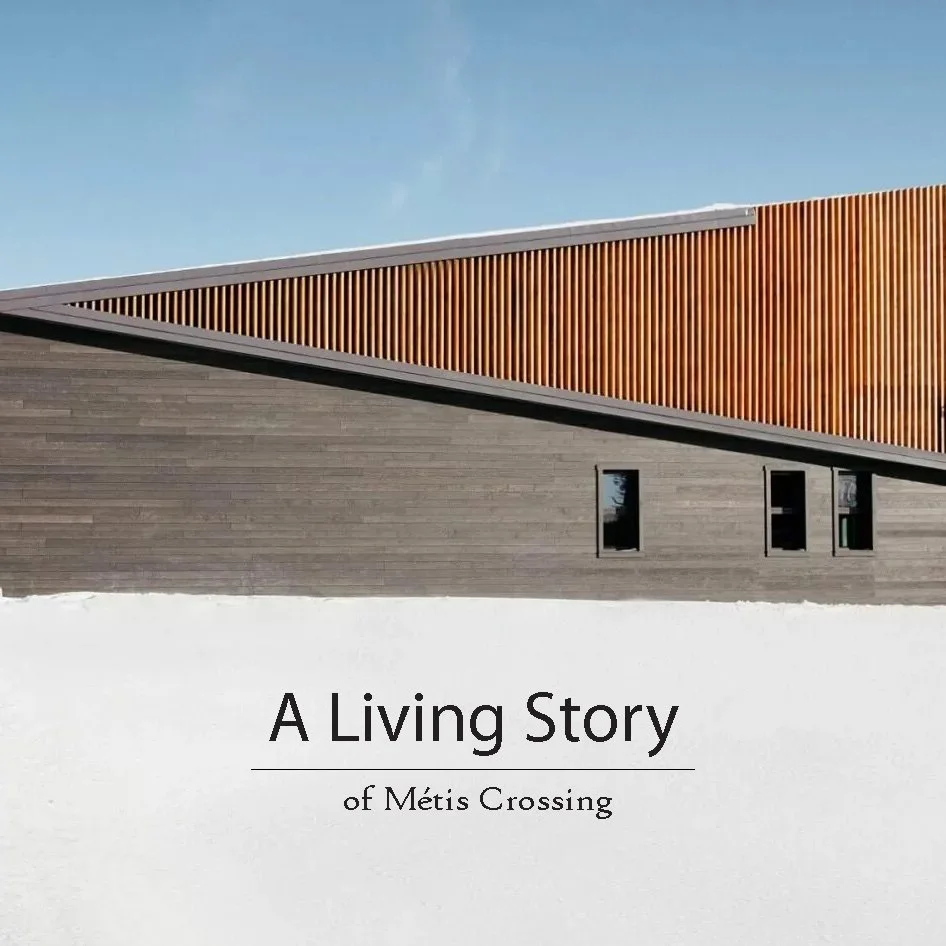CREATING A DESIGN THAT FITS
True sustainability is achieved when the built environment works in harmony with the natural one. Through climate change, we are learning that imposing infrastructure onto a landscape without fully understanding the natural trajectory of that landscape can be expensive. That’s why with Reimagine Architects, we developed a “Living Story” assessment strategy for an infrastructure feasibility master plan.
Métis Crossing is a bold vision by the Métis Nation of Alberta. A 688 acre site northeast of Edmonton Alberta that is designed to become a premier centre for cultural interpretation, education, gatherings, and business development for the Métis Nation. It’s the first major cultural interpretive destination in Alberta and will celebrate the culture, history, and the contributions of the Métis people in Canada.
Biomimicry Frontiers was invited by Reimagine Architects to help provide a Living Story Site Assessment for the infrastructure masterplan to ensure that the proposed infrastructure would fit (and contribute) to the existing system.
Location: Alberta Canada
Service: Urban resilience strategy | Living Story Site Assessment | Infrastructure Masterplanning
Type: Resiliency Analysis & Nature-based Regenerative Design
Client: Métis Nation of Alberta
Partners: Reimagine Architects
Design Period: 2021-2023
Team: Jamie Miller, Sita Ganesan


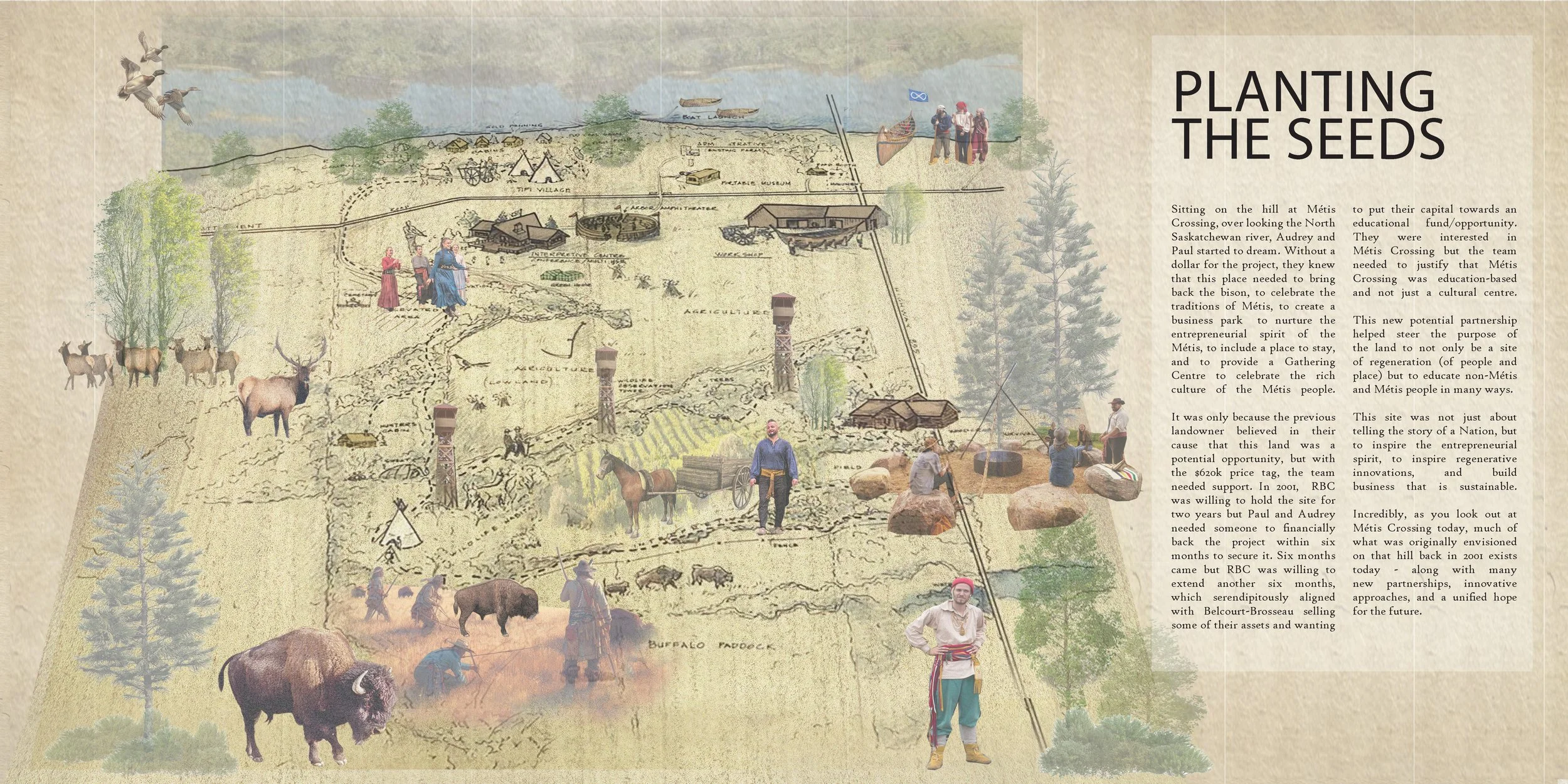


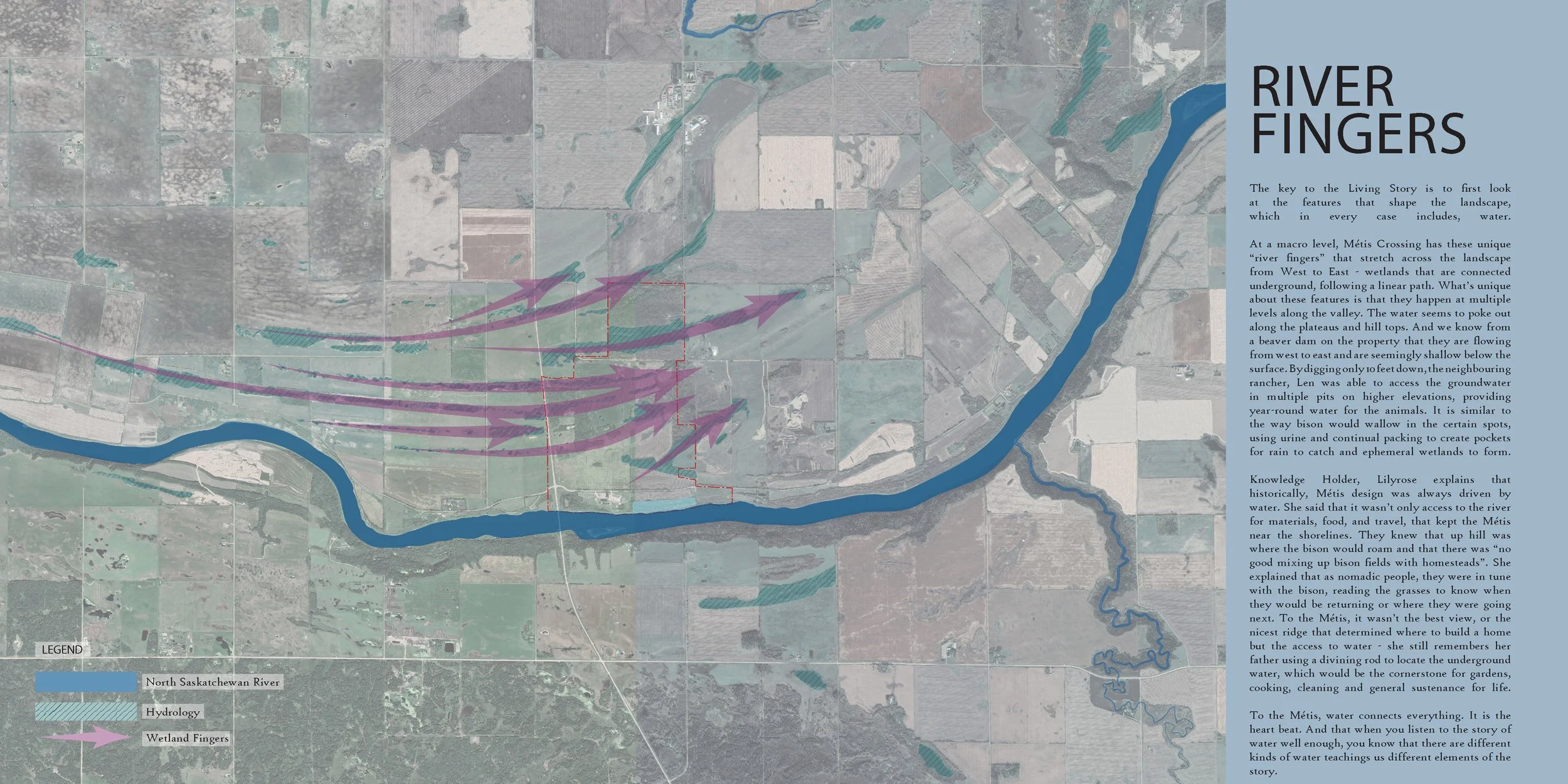



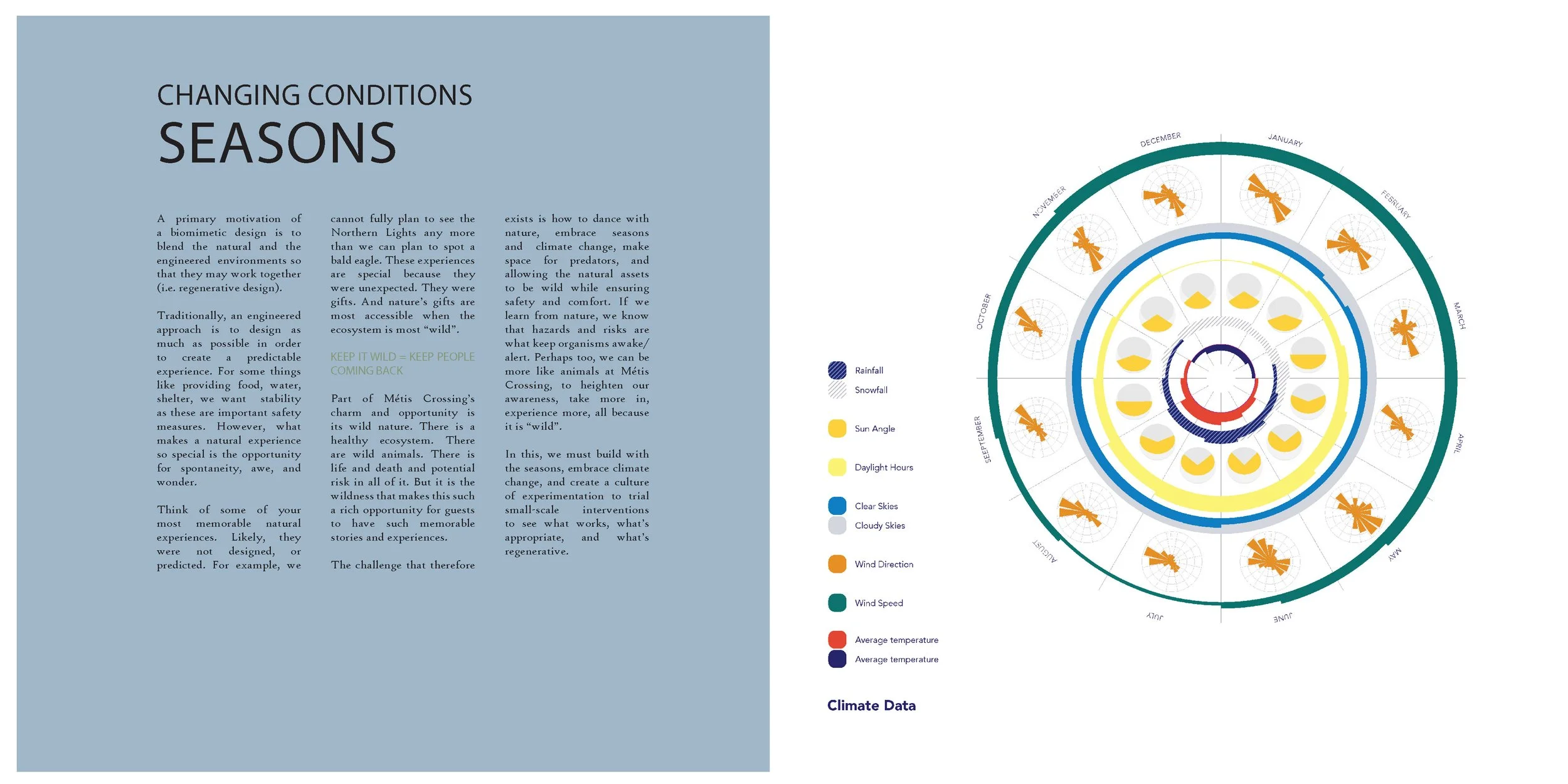

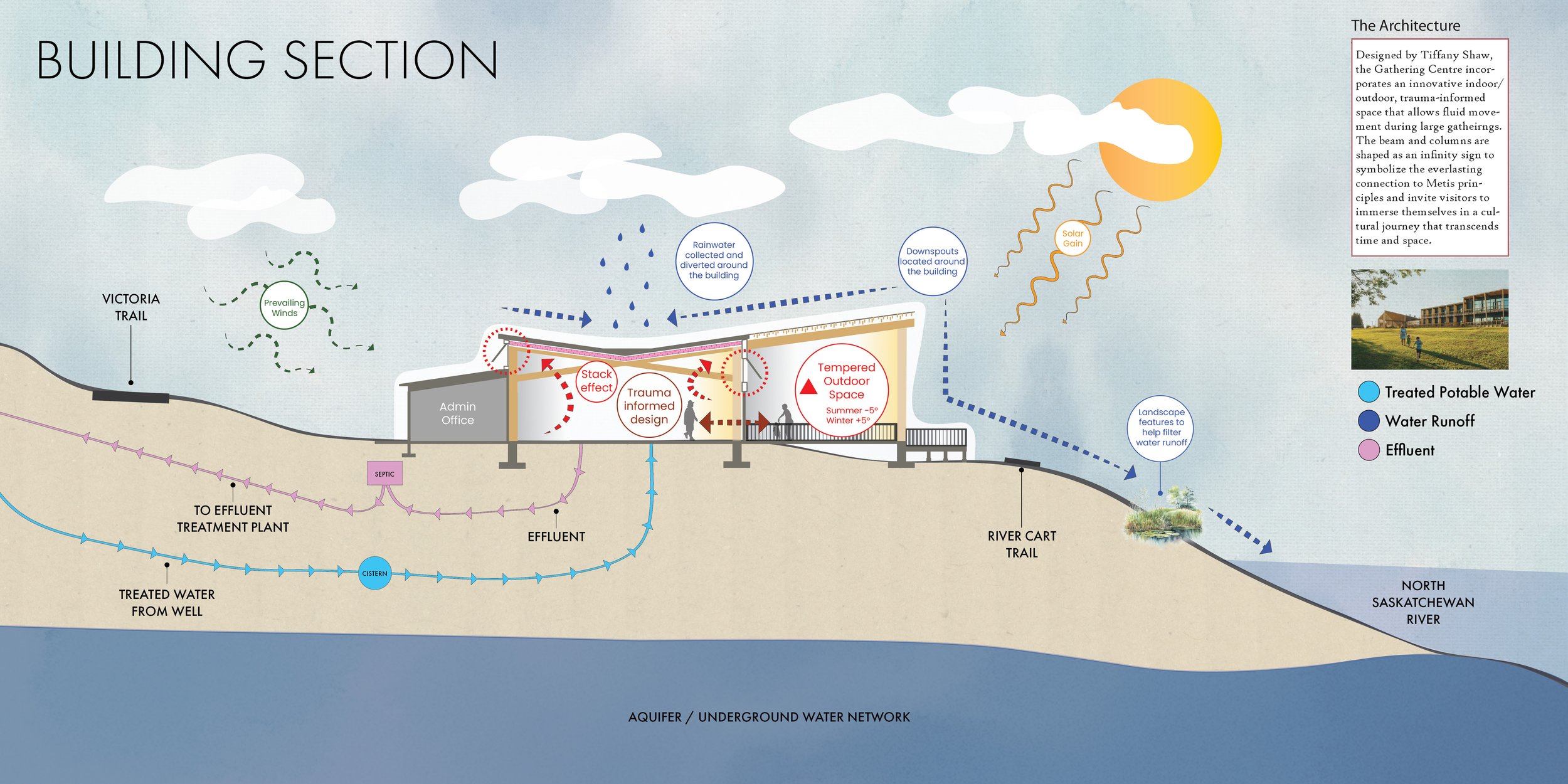

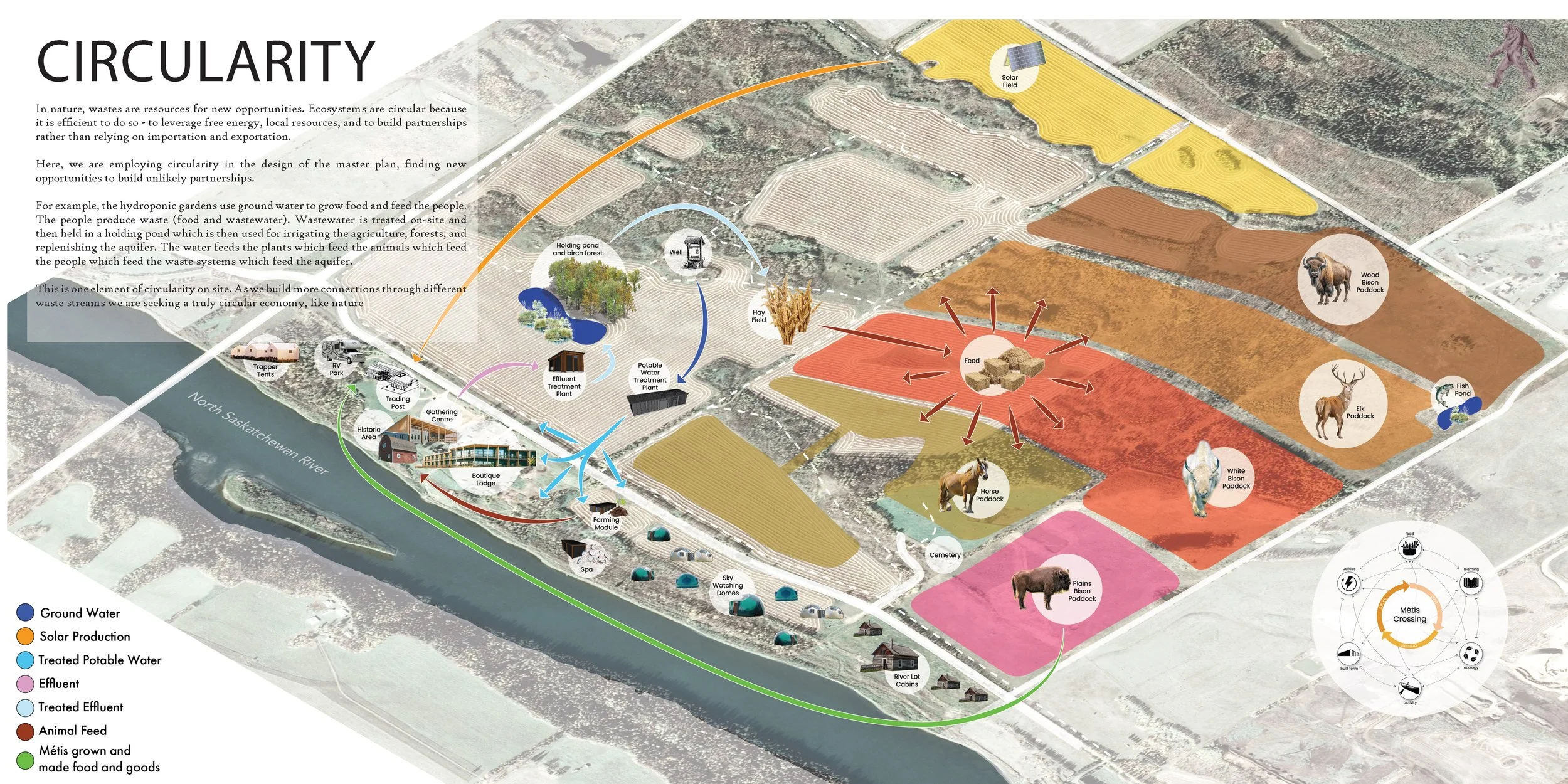

What is a Living Story?
The Living Story methodology is meant to reduce engineering costs by working more in harmony with the natural environment. To do this requires a deep understanding of the natural landscape - knowing what is here, what the land wants to do, and what the land can support us in doing. The “Living Story” leverages a variety of methodologies to develop a holistic interpretation of the site in order to create a harmonious balance between the built and natural environments.
The “Living Story” starts by understanding the “change features,” such as climate, resource flows, hydrology, topography, soil chemistry, and ecology. This is to help us better understand the natural trajectory of the landscape and to understand how we can better integrate our designs within those environmental pressures to reduce long-term costs (it can be expensive to try to resist nature), improve resiliency, and provide more strategic design interventions.
Upon developing a Living Story, we are in a better position to offer more reciprocal design strategies. For example, we can create net-zero carbon by knowing the carbon sequestration performance of the existing forests. We could create a more circular food strategy by knowing where food is most appropriately grown and where wastes and wastewater could be most effectively utilized for soil production and treatment.
We could build more effective food and permaculture strategies by knowing the existing flows on-site, the existing species which could represent natural pesticides, and where nutrients might best contribute to plant life. In each case, these services depend on having an intimate understanding of the existing ecology and natural assets.
Whatever it is, the way you tell your story can make all the difference.
We work to let the land tell the story first, and then find strategies to work within it.
